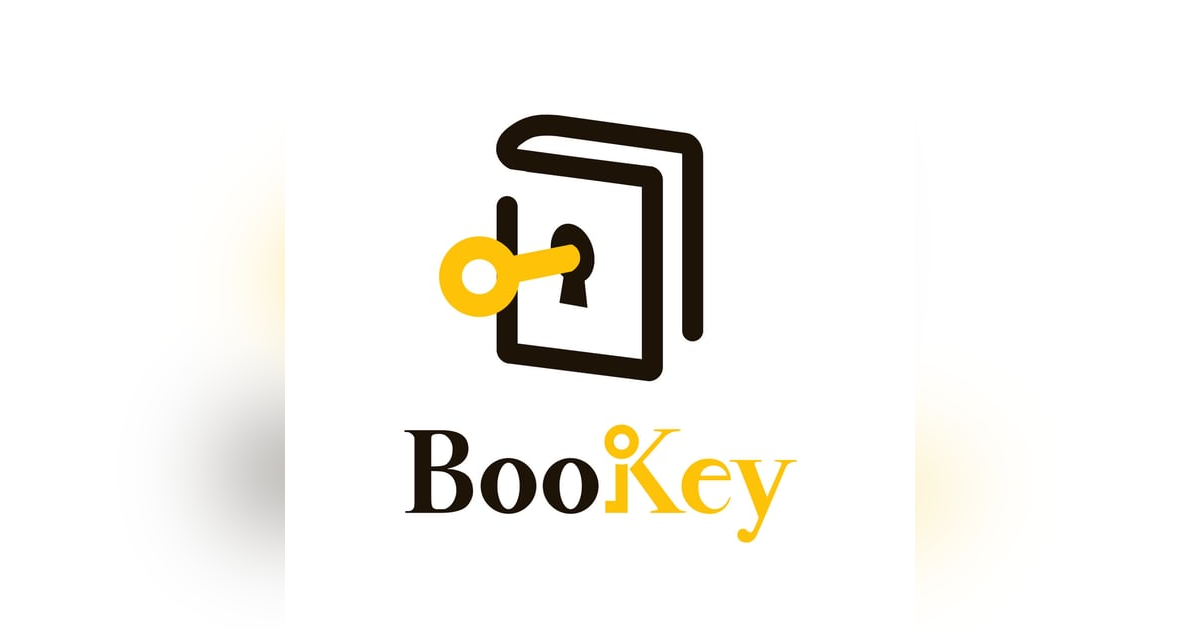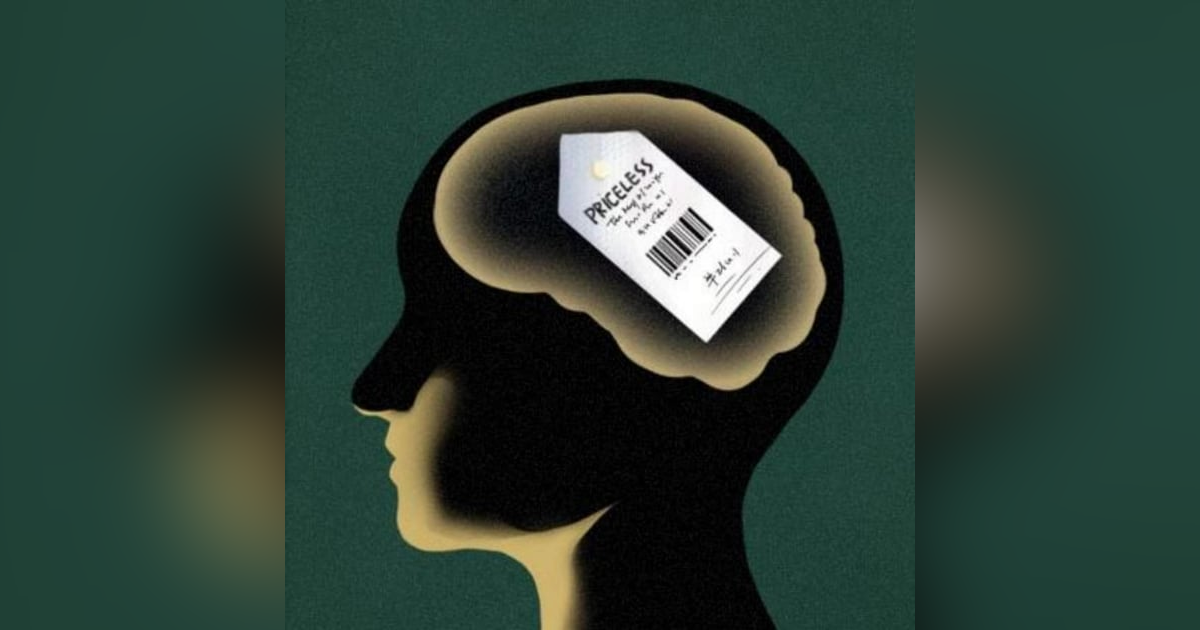
Sign up to get updates from us
By signing up, you agree to receive email from this podcast.

"Priceless: The Myth of Fair Value (and How to Take Advantage of It)" is a non-fiction book by William Poundstone, which delves into the concept of pricing and the psychology behind how people determine the value of goods and services. The book explores the historical and psychological basis for pricing strategies, focusing on how both consumers and businesses perceive value.
Poundstone discusses various experiments and theories from behavioral economics, illustrating how people often make irrational financial choices that do not align with traditional economic models of rational decision-making. Central to the book is the idea that the perceived value can be easily manipulated through marketing techniques, anchoring, the presentation of choices, and other tactics.
The book covers case studies and stories, revealing the hidden influences behind seemingly straightforward pricing decisions. It discusses luxury goods, auctions, menu prices, and supermarket pricing, among others, highlighting how businesses use the psychology of pricing to maximize profits.
"Priceless" is significant for both consumers looking to understand the tricks and manipulations in everyday pricing and for marketers and business professionals aiming to master the art of pricing for competitive advantage.
"Priceless: The Myth of Fair Value (and How to Take Advantage of It)" by William Poundstone explores the concept of value from a psychological perspective, particularly focusing on how people determine the worth of goods and services. The book not only delves into economic theory but also integrates insights from psychology to explain how and why pricing strategies can manipulate consumer perception.
Here are some key points regarding plot development, character insights, and thematic ideas drawn from the book:
Key Plot Points:
1. The Concept of Value: The book opens by challenging traditional notions of value, introducing the reader to behavioral economics and the psychology of decision-making.
2. Historical Perspectives: Poundstone discusses the history of economic thought on value, examining figures like Daniel Kahneman and Amos Tversky, who were pivotal in integrating psychological insights into economic theory.
3. Experiments and Case Studies: Various experiments and real-world case studies are presented throughout the book to illustrate how people often rely on irrational ways of assessing value.
4. Market Implications: The book looks at how businesses and marketers use these cognitive biases to their advantage, strategically setting prices that consumers perceive as fair or beneficial.
Character Development:
While "Priceless" isn't a narrative with characters in the traditional literary sense, Poundstone introduces a range of real individuals—economists, psychologists, marketers—who have contributed significantly to our understanding of value. Through their stories and work, readers gain a deeper understanding of how human behavior regarding valuation is studied and influenced.
Thematic Ideas:
1. Subjectivity of Value: One of the central themes is the inherent subjectivity in how individuals assess value, influenced significantly by external cues rather than intrinsic worth.
2. Irrationality in Economics: The book critically examines the assumption in classical economics that humans are rational actors, showing through various examples how people often make irrational value assessments.
3. Influence of Anchoring: The concept of "anchoring," where initial exposure to a number shapes expectations and perceptions of price, is a recurring theme, showing how it can be manipulated in marketing and negotiations.
4. The Power of Free: Poundstone also discusses the disproportionate value people place on items and services labeled as "free," highlighting its psychological impact and its exploitation in marketing strategies.
Overall, "Priceless" serves as a comprehensive guide on the psychological elements that underpin the concept of value, revealing the complexities and manipulations inherent in pricing strategies and marketplace interactions. The thematic focus on the psychological underpinnings of economic behavior challenges readers to reconsider how they think about the value and pricing of everything around them.
William Poundstone, in his book "Priceless: The Myth of Fair Value (and How to Take Advantage of It)," explores the intricate psychology of decision-making and value assessment, particularly in the contexts of pricing and economics. His writing skills and language style are integral to how he effectively conveys complex emotional and psychological concepts to the reader. Poundstone utilizes several key elements in his writing:
1. Clarity and Precision
Poundstone’s language is clear and precise, which is crucial for discussing complex topics like behavioral economics and psychological experiments. He distills intricate theories into understandable terms without oversimplifying the content. This clarity helps readers grasp the sophisticated mechanisms behind how people perceive and react to prices and value.
2. Narrative and Anecdotal Evidence
Poundstone frequently uses narratives and anecdotes to illustrate his points. These stories not only make the material more engaging but also allow readers to see real-world applications of abstract concepts. By presenting examples from actual experiments or historical incidents, he connects emotional and rational responses in decision-making with economic theories.
3. Logical Structure and Argumentation
His arguments are well-structured, often leading the reader through a logical progression of ideas. Starting from basic concepts and gradually introducing more complex notions, Poundstone builds his case piece by piece. This methodical buildup helps to convey deeper meanings without losing the reader along the way.
4. Use of Questions and Provocations
Poundstone frequently poses questions or presents provocative statements to engage the reader’s curiosity and critical thinking. This strategy encourages readers to reflect on their own experiences and beliefs about value and decision-making, making the reading experience more interactive and personal.
5. Inclusion of Research and Expert Opinions
The author extensively references psychological studies, economic theories, and expert opinions. This not only lends credibility to his arguments but also showcases the breadth of research and diversity of perspectives on the topic. By weaving expert insights into the narrative, he highlights the emotional and cognitive conflicts inherent in valuing objects and experiences.
6. Tone and Humor
Poundstone’s tone often includes a touch of humor or irony, which makes the exploration of economic and psychological analysis more relatable and less daunting. His ability to inject light-hearted commentary into serious discussion helps in balancing the emotional weight of the subject matter.
Conclusion
In "Priceless," William Poundstone expertly employs a combination of narrative, analytical rigor, and engaging queries to navigate the complexities of human behavior in economic contexts. His writing not only educates but also challenges readers to rethink their understanding of value, fairness, and decision-making in daily life. Through his effective use of language and structured argumentation, he conveys both the rational and the emotional dimensions of pricing in a compelling way.
It seems there might be a need for clarification or specificity in your question about "Priceless." This term could refer to several things depending on the context:
1. Priceless (Concept): If you are referring to the idea of objects or experiences being "priceless" in terms of value—meaning so important or unique that their worth cannot be determined by conventional monetary means—then this concept has been influential in many cultures and societies. It highlights the intrinsic values and emotional connections that people have with certain objects or memories which transcend financial evaluation. This perspective can influence consumer behavior, ethical considerations around art and heritage, and more philosophical discussions about what constitutes true value in life.
2. Priceless (Book/Movie): If you're discussing a specific work of fiction or non-fiction named "Priceless," such as the book by Robert K. Wittman about art theft and recovery, we could delve into its impacts specifically. For instance, Wittman’s "Priceless: How I Went Undercover to Rescue the World's Stolen Treasures" brings attention to art crime, influencing perspectives on art conservation, security, and the moral questions surrounding cultural heritage preservation.
3. Priceless (Campaign/Ad): For example, Mastercard’s "Priceless" advertising campaign which began in 1997 has been influential in shaping modern advertising strategies. This campaign expanded the company's brand identity and influenced marketing approaches universally by focusing on experiences rather than products, emphasizing moments that cannot be bought.
If you could specify which "Priceless" you are referring to, or if there's another context or perspective you're interested in, more tailored insights could be provided.
Here’s a summary of notable concepts that are central to "Priceless":
1. Anchoring Effect: The idea that initial exposure to a number or price serves as an anchor, subtly influencing subsequent judgments and decisions on purchasing.
2. Arbitrary Coherence: This concept suggests that although initial prices may be arbitrary, once those prices are established in our minds, they shape not only present prices but future prices as well—establishing a coherent pricing structure in the consumer’s mind.
3. Price Sensitivity: Different consumers have different levels of sensitivity to price changes, which can be influenced by various factors including income, personal valuation of the product, and context of the purchase.
4. Decoy Effect in Pricing: The use of a third, less attractive option can make one of the other two options more appealing; this is often used in marketing to direct customers towards a desired choice.
5. Luxury Goods and Pricing: Explores how luxury brands use high prices as a positive attribute to enhance value perception among consumers.
6. Price-Quality Heuristic: The consumer's perception that higher prices correspond to higher quality, even if that’s not necessarily the case.
7. Menu Psychology: The design of menus and the arrangement of prices can greatly influence customer decisions in restaurants and similar settings.
8. The Wine List Tactic: How items are priced on wine lists or in other retail settings can manipulate customer choices to spend more than they initially planned.
9. Free Offers and Zero Price Effect: Discusses how the concept of ‘free’ can significantly alter consumer behavior and increase the attractiveness of an offer.
10. Mental Accounting: Describes how people differently value money depending on its source, intended use, and temporal aspects, which can influence spending behavior.
These insights from "Priceless" offer a fascinating glimpse into the psychological factors that influence our perceptions of price and value, affecting daily decision-making in consumer behavior. To get the full depth and breadth of the arguments and examples Poundstone provides, reading the book would be essential.
Book https://www.bookey.app/book/priceless-by-william-poundstone
Author https://www.bookey.app/quote-author/william-poundstone
Quotes https://www.bookey.app/quote-book/priceless
YouTube https://www.youtube.com/watch?v=wng44WzPZQ0
Amazom https://www.amazon.com/-/zh/dp/0809078813